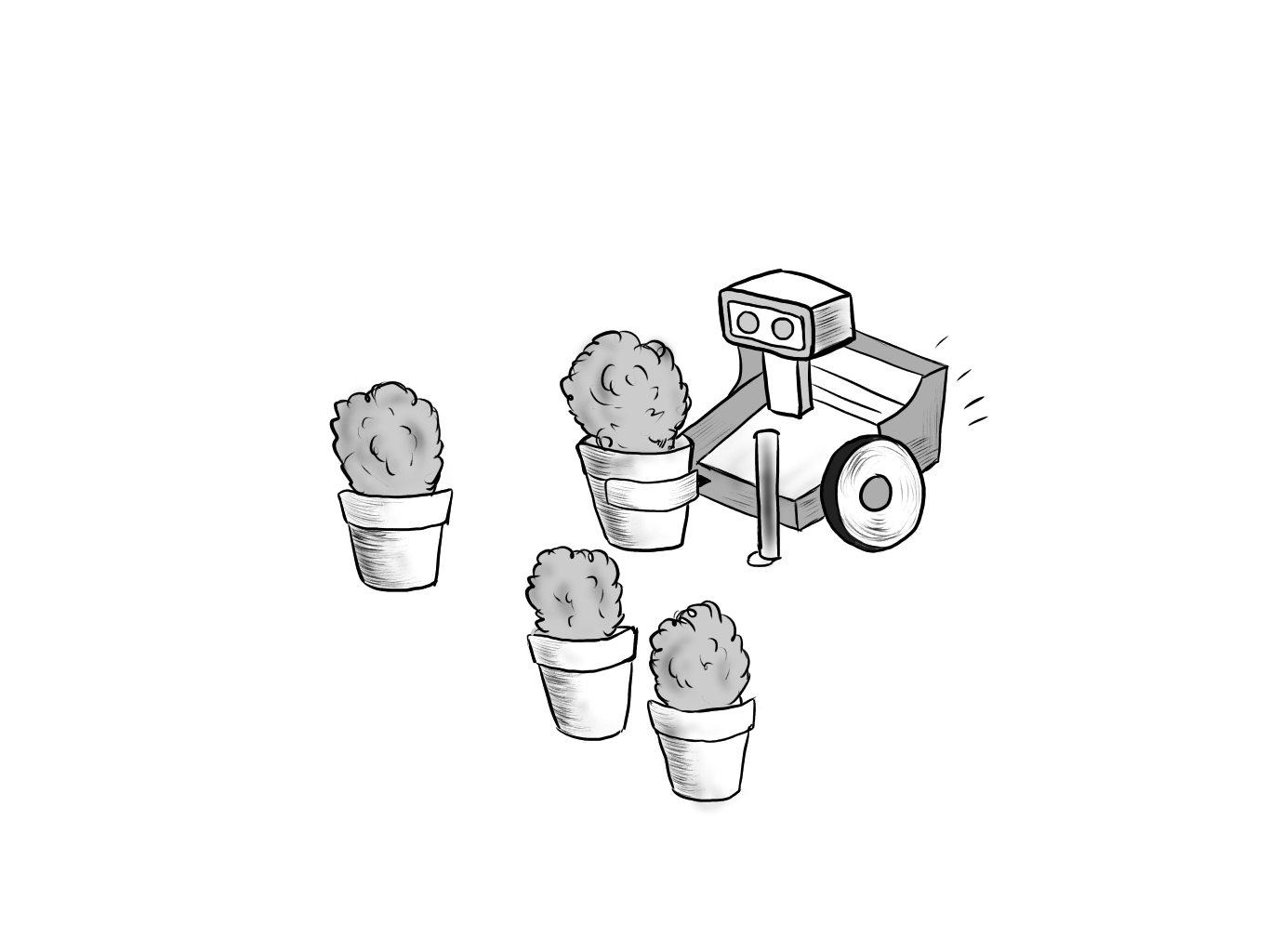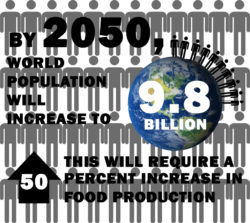

A farmer walks through the field carrying bright green plants in his arm. His name is Angus and he’s a robot working to revolutionize farming by making it more resource and time efficient. His pristine, clean structure makes him look like he’s from the future, but in reality he exists just a few miles away in San Carlos, growing fresh produce like kale and lettuce.
According to the Food and Agriculture Organization of the United Nations (FAO), food production will need to increase by 50 percent by 2050. In addition to overpopulation, climate change negatively impacts food production and agriculture. About 13 percent of the world is malnourished and numbers are projected to rise. The solution? Automated farming.

Historically, science and technology have always found a way to meet the demand brought on by a growing population. We are now in a digital age where agricultural management must follows society’s progression towards technology. One example is precision agriculture, a type of farming based on the use of satellites that improves farmers’ profits and yields while reducing the negative impacts of farming on the environment, such as water waste and chemical overuse by making the farming process more accurate.
Though it has only existed for around 25 years, precision agriculture is widely used in over 50 percent of farms today. Under this concept, agencies such as the National Aeronautics and Space Administration and the US Department of Agriculture are looking into the use of drones to distinguish specific locations where agriculture can thrive. In order to feed the entire population, it is estimated that 50 percent of land needs to be saved for agriculture.
Currently, agriculture uses up 80 percent of U.S. water supply, with the FAO estimating that 60 percent of that water goes to waste. Agricultural robots are the solution—they are precise and can efficiently reduce the use of water.
Robots can work day and night and complete many tasks dangerous to humans, such as pesticide-spraying. Robots can also decrease the use of pesticides as they can better target specific areas where chemicals are necessary. An example of this is Blue River Technology, a company located in Sunnyvale that uses precision agriculture in their newest technology, the “See and Spray,” a machine that uses computer vision and machine learning to automatically determine and target which areas need certain herbicides. Farmers around the world currently spend $25 billion on herbicides each year, but Blue River Technology estimates that the “See and Spray” can cut cost and usage down by 90 percent.
Chemicals have many detrimental effects that can lead to cancer or workers, so letting robots do this work can help save lives. Environmental benefits are huge too. It is predicted that the effects of climate change will affect the world’s food growth, especially in poorer countries. Autonomous farms have the potential to address the expected effects of climate change on food growth.
Considering the harmful effects of pesticides on humans (both workers and consumers), the amount of waste produced and the effects of climate change, robots might just be the inevitable solution. It eliminates the hard labor but gives time and new opportunities for farm workers. Software is eating the world, but it will soon feed us.





